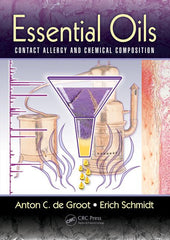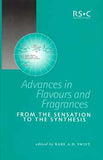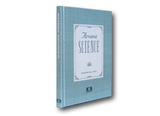Essential Oils: Contact Allergy and Chemical Composition By Anton C. de Groot, Erich Schmidt
May 23, 2016
Reference - 1058 Pages - 2 B/W Illustrations
Features
- Provides a full literature review of contact allergy to and chemical composition of 91 essential oils and two absolutes
- Presents the largest set of analytical reports on essential oils in scientific literature to date
- Provides tables of all chemicals which can be found in each essential oil with concentrations
- Presents an alphabetical list of 4,350 ingredients identified in the oils and absolutes with their synonyms and specifying in which oils each chemical can be present
- Provides a tabular list of all known allergens to the oils discussed
- Includes reference tables on the quantitative composition of essential oils that are of regulatory use to the fragrance industry
- Covers an extensive amount of information to benefit non-medical professionals involved with the research, production, distribution, and use of essential oils and products containing essential oils
Summary
Essential Oils: Contact Allergy and Chemical Composition provides a full review of contact allergy to essential oils along with detailed analyses of the chemical composition of essential oils known to cause contact allergy. In addition to literature data, this book presents the results of nearly 6,400 previously unpublished sample analyses, by far the largest set of essential oils analyses ever reported in a single source of scientific literature.
Covering 91 essential oils and two absolutes, the book presents an alphabetical list of all 4,350 ingredients that have been identified in them, a list of chemicals known to cause contact allergy and allergic contact dermatitis, and tabular indications of the ingredients that can be found in each essential oil.
The book discusses contact allergy and allergic contact dermatitis for each of the oils and absolutes, sometimes able to provide only one or two reports but drawing upon considerable amounts of literature in other cases, such as with tea tree oil, ylang-ylang oil, lavender oil, rose oil, turpentine oil, jasmine absolute, and sandalwood oil.
While limited information on the main components and their concentrations would be enough for most dermatologists, this book gives extensive coverage not only to improve levels of medical knowledge and quality of patient care, but also for the benefit of professionals beyond clinical study and practice, such as chemists in the perfume and cosmetics industries, perfumers, academic scientists working with essential oils and fragrances, aromatherapists, legislators, and those involved in the production, sale, and acquisition of essential oils.
Table of Contents
IntroductionWhy a Book on Contact Allergy to and Chemical Composition of Essential Oils?
Contact Allergy to Essential Oils: A Survey of Oils and Plants
Chemical Composition of Essential Oils: Data Provided
Essential Oils: General Aspects
Introduction
What Are Essential Oils?
Products Obtained from Plants Which Are Not Essential Oils
History
What Are Essential Oils Used For?
Production of Essential Oils
Chemistry of Essential Oils
Factors Influencing the Composition of Essential Oils
Analysis of Essential Oils
Quality, Purity and Adulteration of Essential Oils
Contact Allergy to Essential Oils: General Aspects
Essential Oils Which Have Caused Contact Allergy
Frequency of Contact Allergy to Essential Oils
Clinical Relevance of Positive Patch Test Reactions to Essential Oils
Reports of Allergic Contact Dermatitis from Essential Oils
Clinical Picture of Allergic Contact Dermatitis from Essential Oils
Products Responsible for Allergic Contact Dermatitis from Essential Oils
Occupational Allergic Contact Dermatitis from Essential Oils
Co-Reactivity to Other Test Substances in Patients Reacting to Essential Oils
Analytical Investigation of the Components of Essential Oils Which Have Caused Allergic Contact Dermatitis
The Allergens in Essential Oils
Patch Testing with Essential Oils and Their Ingredients
Chemicals Identified in Essential Oils Which Have Caused Contact Allergy
Chemical Composition of and Contact Allergy to Essential Oils
Introduction to the Oil Chapters
Angelica Fruit Oil
Angelica Root Oil
Aniseed Oil
Basil Oil, Sweet
Bay Oil
Bergamot Oil
Black Cumin Oil
Black Pepper Oil
Cajeput Oil
Calamus Oil
Cananga Oil
Carrot Seed Oil
Cassia Bark Oil
Cassia Leaf Oil
Cedarwood Oil, Atlas
Cedarwood Oil, China
Cedarwood Oil, Texas
Cedarwood Oil, Virginia
Chamomile Oil, German
Chamomile Oil, Roman
Cinnamon Bark Oil, Sri Lanka
Cinnamon Leaf Oil, Sri Lanka
Citronella Oil, Java
Citronella Oil, Sri Lanka
Clary Sage Oil
Clove Bud Oil
Clove Leaf Oil
Clove Stem Oil
Coriander Fruit Oil
Costus Root Oil
Cypress Oil
Dwarf Pine Oil
Elemi Oil
Eucalyptus Citriodora Oil
Eucalyptus Globulus Oil
Galbanum Resin Oil
Geranium Oil
Ginger Oil
Grapefruit Oil
Guaiacwood Oil
Hyssop Oil
Jasminum Grandiflorum Absolute
Jasminum Sambac Absolute
Juniper Berry Oil
Laurel Leaf Oil
Lavandin Abrial Oil
Lavandin Grosso Oil
Lavandin Oil (Other Cultivars and Cultivar Not Specified)
Lavender Oil
Lemon Oil
Lemongrass Oil, East Indian
Lemongrass Oil, West Indian
Litsea Cubeba Oil
Lovage Oil
Mandarin Oil
Marjoram Oil (Sweet)
Melissa Oil (Lemon Balm)
Myrrh Oil
Neem Oil
Neroli Oil
Niaouli Oil
Nutmeg Oil
Olibanum Oil (Frankincense Oil)
Orange Oil, Bitter
Orange Oil, Sweet
Palmarosa Oil
Patchouli Oil
Peppermint Oil
Petitgrain Bigarade Oil
Pine Needle Oil (Scots Pine Oil)
Ravensara Oil
Rosemary Oil
Rose Oil
Rosewood Oil
Sage Oil, Dalmatian
Sage Oil, Spanish
Sandalwood Oil
Silver Fir Oil
Spearmint Oil
Spike Lavender Oil
Star Anise Oil
Tangerine Oil
Tea Tree Oil
Thuja Oil
Thyme Oil
Thyme Oil, Spanish
Turpentine Oil
Valerian Oil
Vetiver Oil
Ylang-Ylang Oil
Zdravetz Oil
Cardamom Oil
Himalayan Cedarwood Oil
Chemicals in Essential Oils: Alphabetical List and Oils in Which They Have Been Identified
List of Synonym
Anton C. de Groot received his medical and dermatology specialist training at the University of Groningen, The Netherlands. He took an early interest in contact allergies and the side effects of drugs. He is a former chair of the Contact Dermatitis Group, part of the Dutch Society for Dermatology and Venerology. He was also a cofounder of the Dutch Journal of Dermatology and Venerology and served as an editor for 20 years, including 10 years as its editor in chief. He has served as a board member on several other journals and is currently a member of the editorial advisory board of Dermatitis. He has authored 12 books, as well as more than 60 book chapters and over 300 articles in Dutch and international journals.
Erich Schmidt completed his studies in business economics at the Landshut University of Applied Sciences, Bavaria, Germany. Since he first began working with essential oils in a middle-sized German company that designed and produced perfume compositions, his interest in analyzing the compositions of essential oils increased. He eventually established an analytical laboratory and as the use of aromatherapy grew in Germany, he provided information about risks, safety evaluation, and genuineness of essential oils. In 1995 he was chosen as the German responsible representative of the International Organization for Standardization’s Technical Committee 54, Essential Oils. Since 2005, he has authored or coauthored more than 90 publications in numerous journals, and contributed two chapters to the Handbook of Essential Oils.


















